Understanding Extraction: How It Impacts Coffee Flavor
Coffee extraction is the process that determines the coffee flavor you're familiar with—it's the magic that transforms ground beans and water into your favorite drink. Extraction occurs as water interacts with the coffee grounds, dissolving the flavor compounds that characterize each cup. These compounds include oils, acids, and sugars, all of which combine to create a unique tasting experience. Various coffee brewing methods, such as pour-over or espresso, can significantly impact this process. Each method extracts different amounts and types of compounds, affecting intensity, aroma, and balance. Understanding this can enhance your appreciation and enjoyment of coffee.

What is Coffee Extraction
Think of coffee extraction as a symphony conductor leading an orchestra. Just like a conductor brings different instruments together to create harmony, extraction blends the various flavor components in coffee. When hot water makes contact with ground coffee, it dissolves a mélange of soluble substances, including acids, oils, and sugars. This essential process is responsible for the depth and complexity appreciated in each sip.
The role of extraction is highlighted by different coffee brewing methods. For instance, an espresso machine exerts high pressure, pulling flavors swiftly and intensely, whereas a French press allows for a gentler, full-bodied extraction. Each method delivers a distinct profile, bringing out different flavors and balances, offering a unique taste experience.
It’s important to pay attention to factors such as grind size, water temperature, and brewing time during coffee extraction. A fine grind allows more surface area for water to interact with, affecting the extraction rate and potentially leading to a more pronounced coffee flavor. Similarly, water that is too hot or too cold can alter the outcome, changing the enjoyable intricacies of your drink.
Finding the perfect balance in coffee extraction is a blend of art and science. As you explore varying proportions and brewing techniques, you'll start to notice how subtle changes can transform the aroma, richness, and texture of your coffee. Understanding these variables enhances your ability to craft a beverage that suits your palate.

Factors Affecting Coffee Extraction
The grind size of your coffee beans is crucial for effective coffee extraction, directly impacting flavor. A finer grind offers more surface area for water interaction, leading to a faster extraction and potentially a more intense coffee flavor. Conversely, a coarse grind slows down the process, resulting in a smoother taste. Adjusting the grind size allows you to control how quickly or slowly the flavors are released into the brew.
Water temperature is another significant factor. Ideally, water should be between 195°F and 205°F for optimal extraction. If too cold, the water struggles to dissolve the coffee compounds, resulting in a flat taste. On the other hand, water that is too hot can over-extract, pulling out bitter compounds and altering the desired flavor profile adversely.
Brewing time is a subtle but essential element influencing coffee extraction. Shorter brewing times capture lighter, acidic notes, while prolonged contact with the grounds enhances stronger, bitter undertones. Tinkering with the duration can help you discover the right balance for your taste preference, bringing out the best in your coffee.
What most people don’t see about coffee brewing methods is the meticulous balance of these elements that makes all the difference in flavor. Every choice you make, from grind size to timing, influences the final cup. By understanding and manipulating these variables, you unlock the ability to craft a coffee experience tailored to your liking.
Understanding Flavor Compounds
Flavor compounds in coffee are the diverse molecules that interact during coffee extraction to create the distinct nuances you taste. These compounds include acids, which provide brightness; sugars, which add sweetness; and oils that contribute to body and aroma. The balance of these elements defines the complexity and richness of your coffee flavor, making each cup a unique sensory experience.
Many believe that the roast level alone is the primary determinant of flavor, but there’s a strong case for the role of these individual flavor compounds in shaping taste. As you adjust your coffee brewing methods, you're altering which compounds are extracted and how they interact, significantly impacting the coffee flavor. Different methods emphasize certain compounds over others, giving each brew its own character.
Acids like citric and malic acids offer zesty, fruity tones, while amino acids deepen the umami notes. Sugars such as sucrose contribute to the natural sweetness, which when paired with the right brewing conditions, can provide a smooth finish. The oils present in coffee lend a velvety mouthfeel, enhancing the overall drinking experience by enriching the aroma and texture.
Understanding these flavor compounds empowers you to experiment and refine your brewing approach to develop a taste profile that suits your palate. By exploring these elements, you can adjust your process to highlight specific aspects of flavor and make each cup a personalized masterpiece.
Brewing Methods and Their Extraction Profiles
Each coffee brewing method possesses a unique extraction profile, affecting which flavor compounds are highlighted in your cup. Espresso machines, using high pressure, extract quickly, producing a concentrated flavor with a rich crema. This method enhances certain oils and acids, creating a robust, lively brew with complex characteristics. The intense process focuses on highlighting bold and intense notes.
Pour-over methods, like Chemex or V60, offer a delicate balance and clarity in flavor. Water flows steadily through the coffee grounds, allowing for a gradual extraction of flavors and a cleaner taste profile. These methods emphasize brightness and allow subtler acids and aromatic compounds to shine, leading to a bright, nuanced cup.
French press brewing immerses coffee in water, extracting an array of flavor compounds for a full-bodied and textured experience. This method captures the oils and dense compounds, resulting in a creamy mouthfeel. The extended contact time with water permits a more rounded, profound extraction, often appreciated for its depth.
In the next few years, brewing methods are likely to evolve with technology, allowing even more precision in extraction profiles. Innovations like automated pour-over devices and smart machines may enable personalized coffee experiences, tailoring flavor outcomes to individual tastes. Such advancements will expand the possibilities of exploration in coffee brewing.

Common Mistakes in Coffee Extraction
Using water that is too hot or too cold is a frequent mistake in coffee extraction that can alter the flavor profile. Water at incorrect temperatures can lead to under-extraction or over-extraction, affecting the balance of the coffee’s acids, sugars, and oils. Proper temperature control ensures that you capture the desired flavor notes without introducing unwanted bitterness or acidity.
Inconsistently ground coffee is another common pitfall in coffee brewing methods. According to recent studies, varying grind sizes within the same batch can result in uneven extraction and an imbalanced coffee flavor. Uniformly ground coffee allows water to extract flavor compounds evenly, yielding a more predictable and harmonious flavor.
Another mistake is neglecting the brewing time, which is key to achieving optimal extraction. If the brewing time is too short, your coffee may taste sour or weak due to under-extraction. Conversely, letting it brew for too long can extract excess bitter compounds. Using specific timers can help ensure that you maintain the ideal contact time for your preferred coffee brewing method.
Improper coffee-to-water ratio is one more error often made during coffee extraction. Too much coffee can overpower the subtle nuances, while too little may lead to a watery brew that's lacking in complexity. Adjusting the ratio can allow you to tailor the strength and depth of your coffee flavor to meet your personal taste preferences.

Tasting Notes and Extraction
Tasting notes are the diverse attributes and nuances you detect when savoring a cup of coffee. They reflect the coffee flavor profile birthed from the coffee extraction process. The interplay of acids, sugars, and oils manifests as floral aromas, chocolate undertones, or fruity highlights. By identifying these notes, you gain insight into the intricate world of flavor hidden within each brew.
Looking at tasting notes through the lens of extraction, we can see that each coffee brewing method acts like a filter, shaping the flavor outcome. A pour-over might highlight delicate citrus notes, while a French press could emphasize deeper, earthier tones. By focusing on how extraction affects these elements, you can tailor your approach to bring out specific flavors in your cup.
Understanding tasting notes allows you to experiment with and adapt your brewing methods. For instance, adjusting grind size or brewing time can amplify particular notes or subdue others. This exploration helps you make informed choices, crafting a personalized coffee experience that resonates with your unique preferences.
Tasting notes serve as a guide to refining your coffee palate. By being attentive to these nuances, you enhance your appreciation of how various factors in extraction influence the overall sensory experience. Knowledge of these subtleties enables you to enjoy coffee on a deeper level, celebrating the art and science behind each brew.
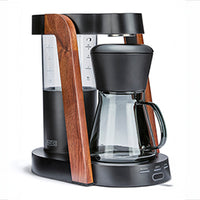 Ratio Eight S2
Ratio Eight S2
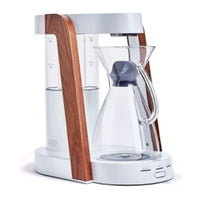 Ratio Eight Original
Ratio Eight Original
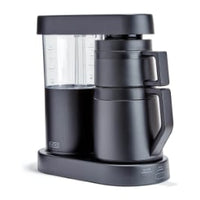 Ratio Six
Ratio Six
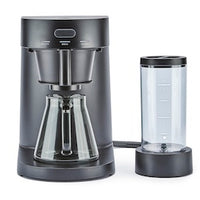 Ratio Four
Ratio Four
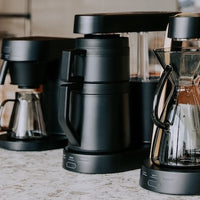 Compare Machines
Compare Machines






